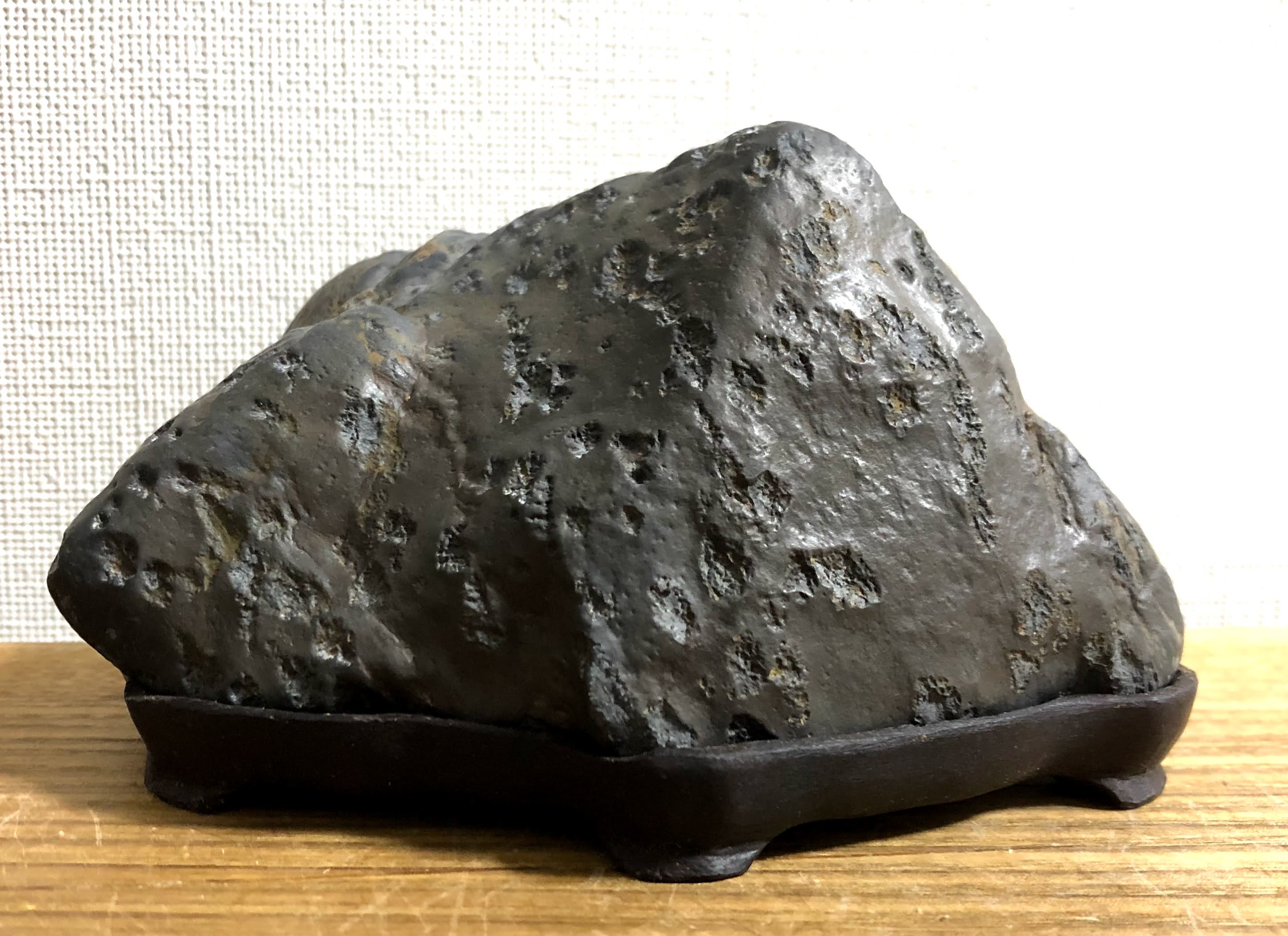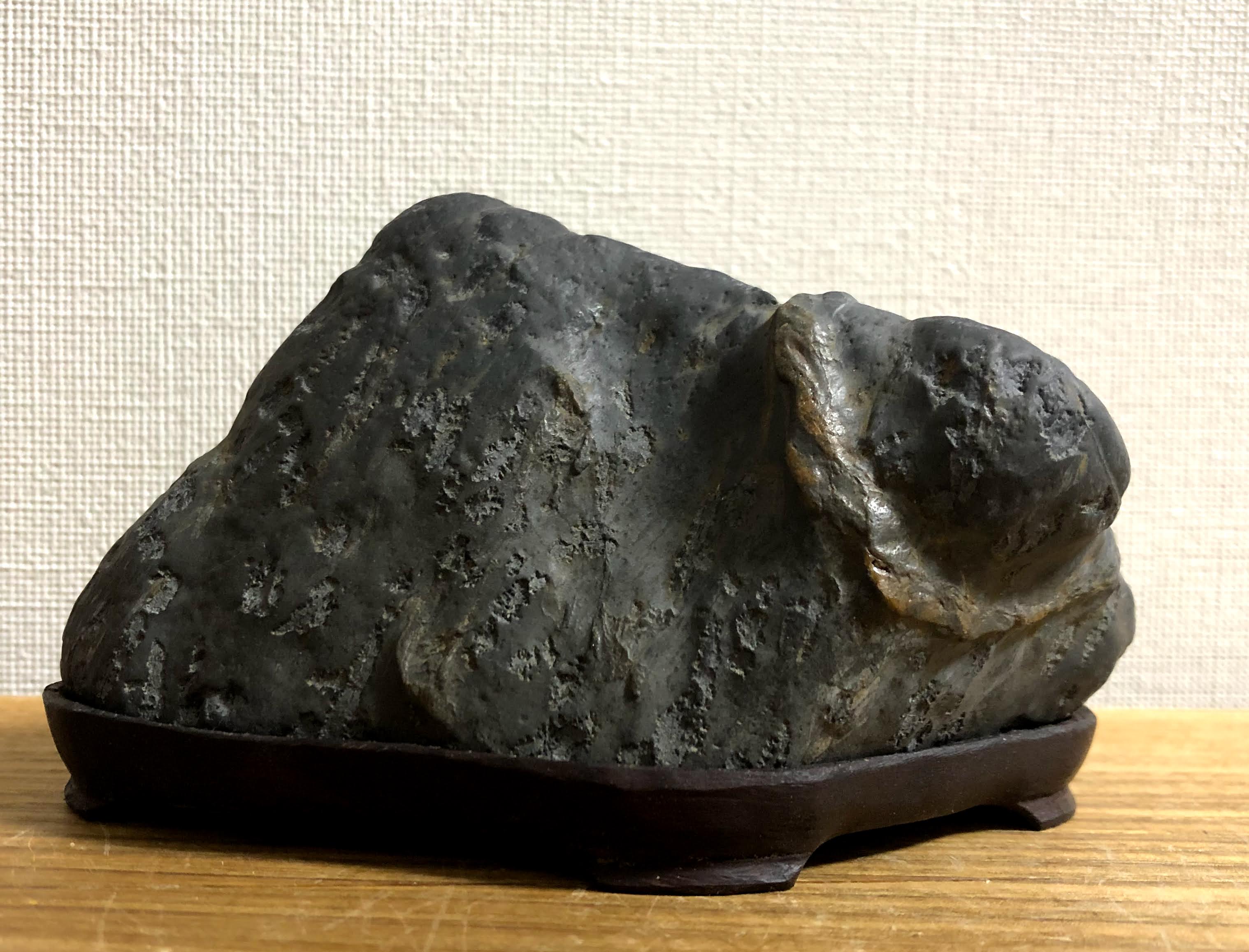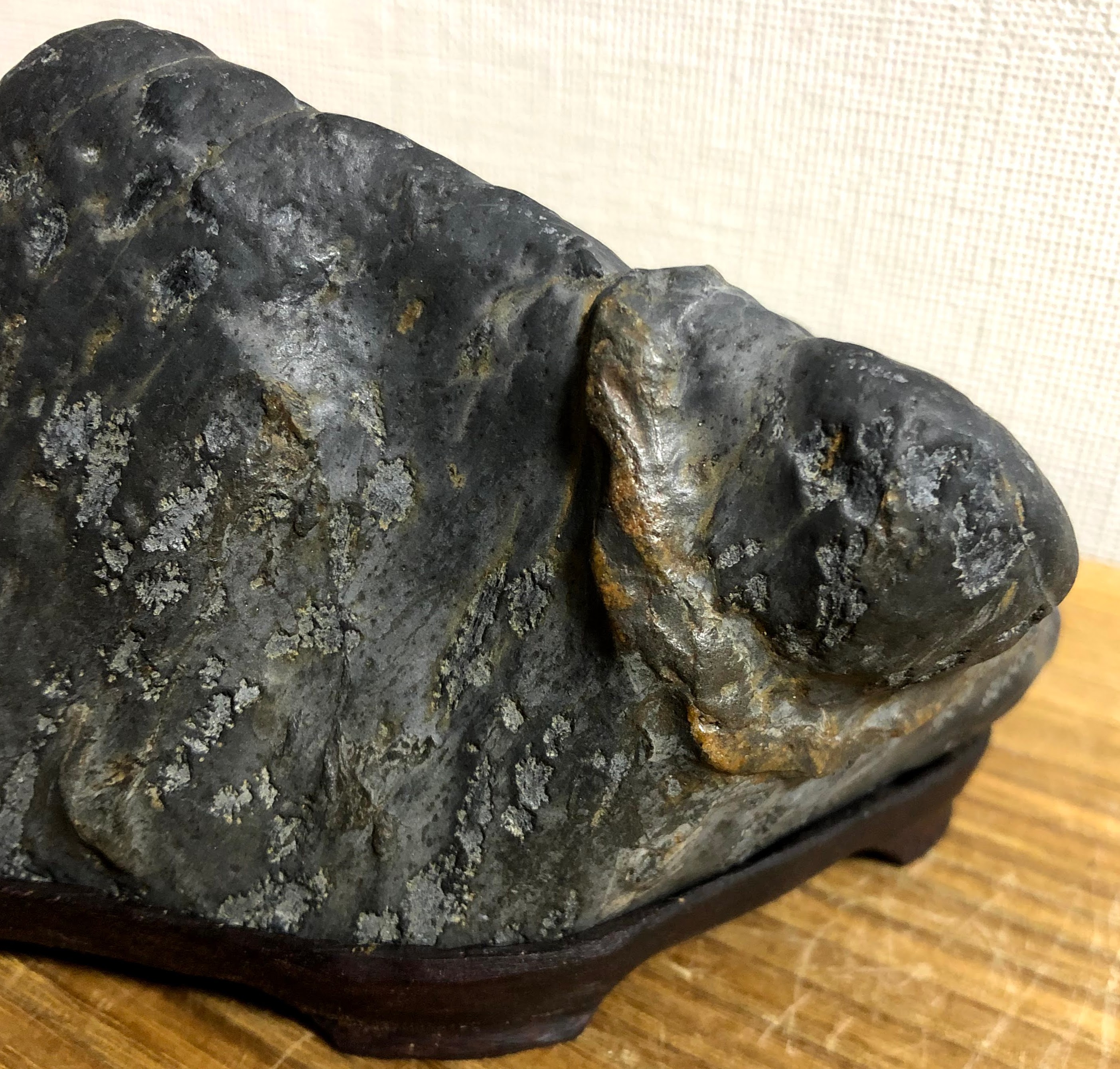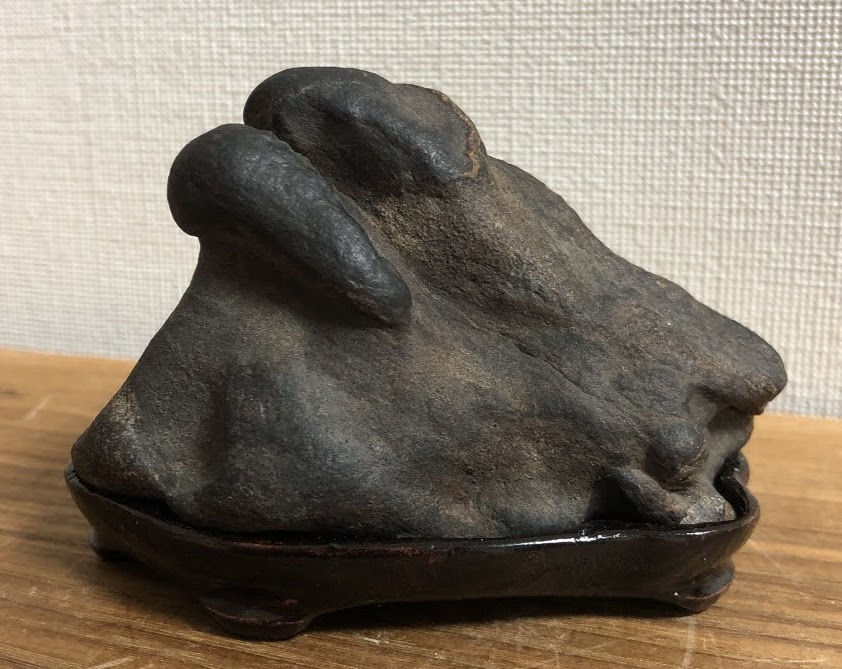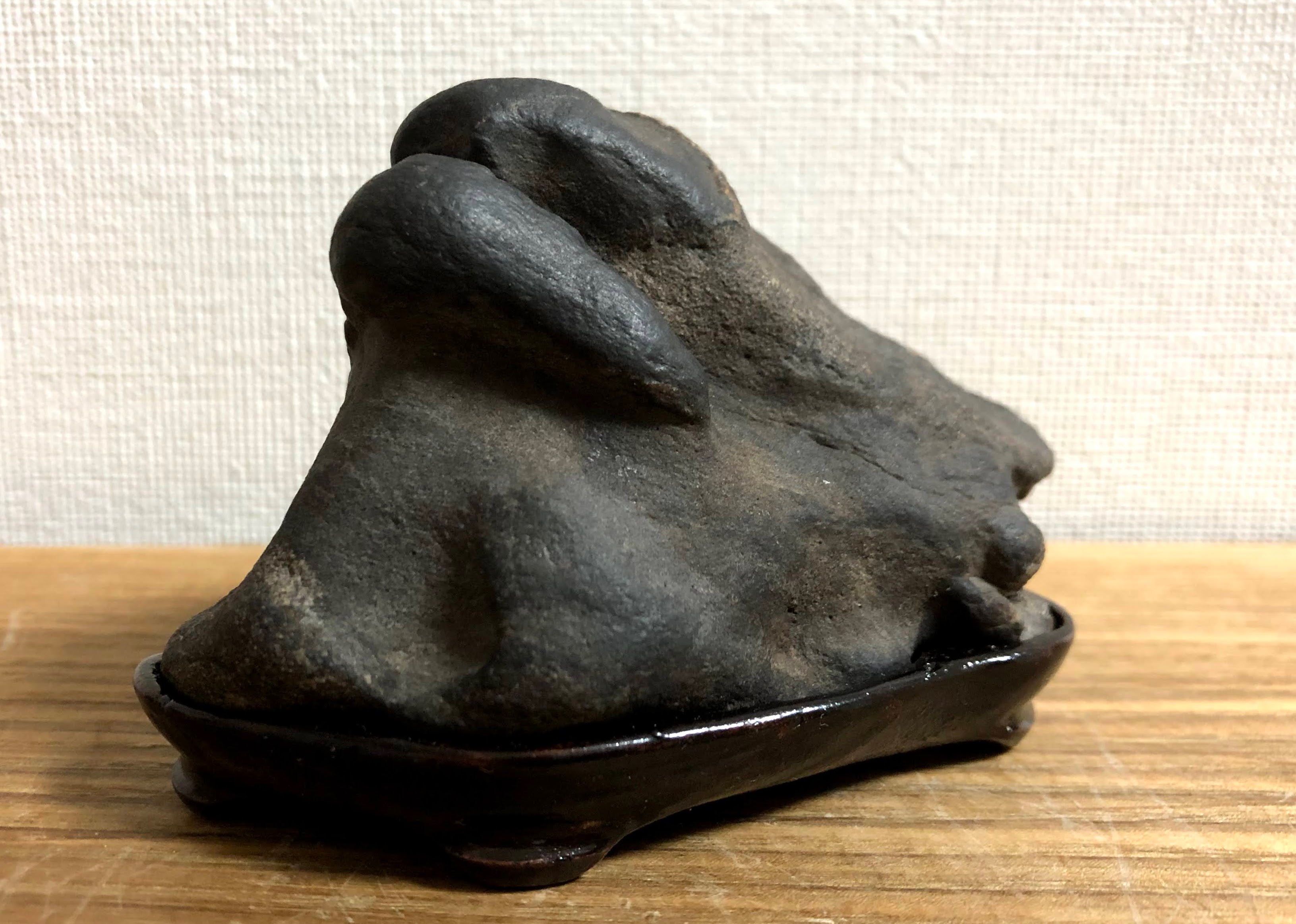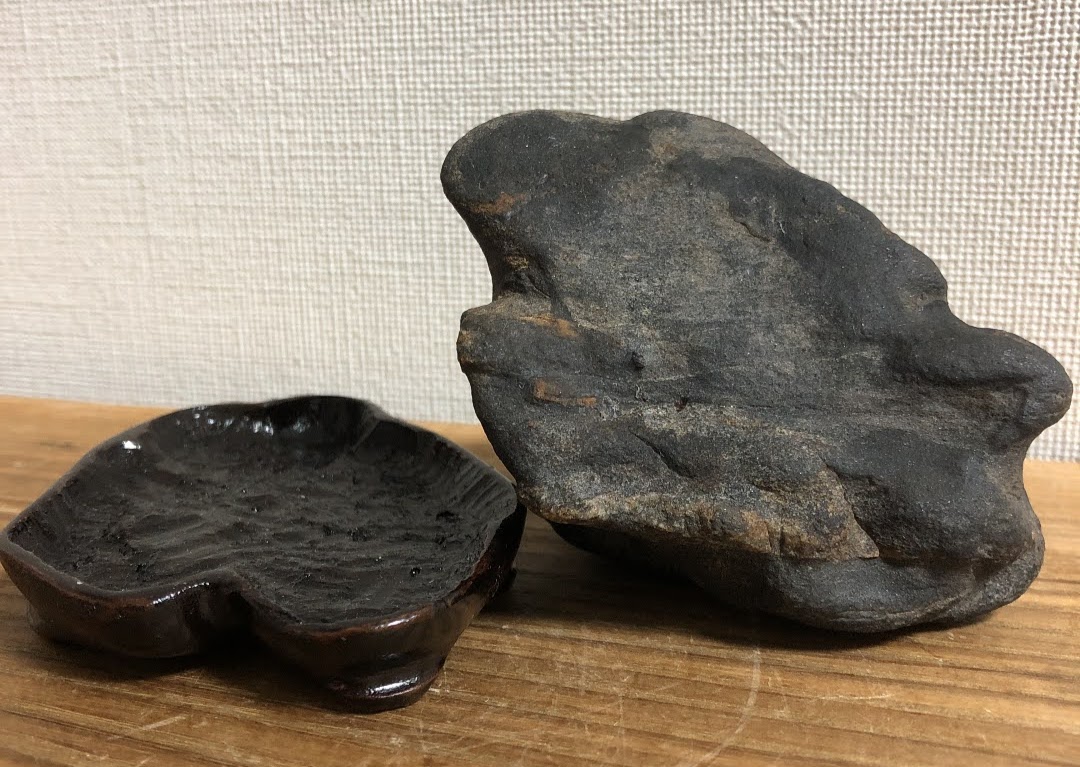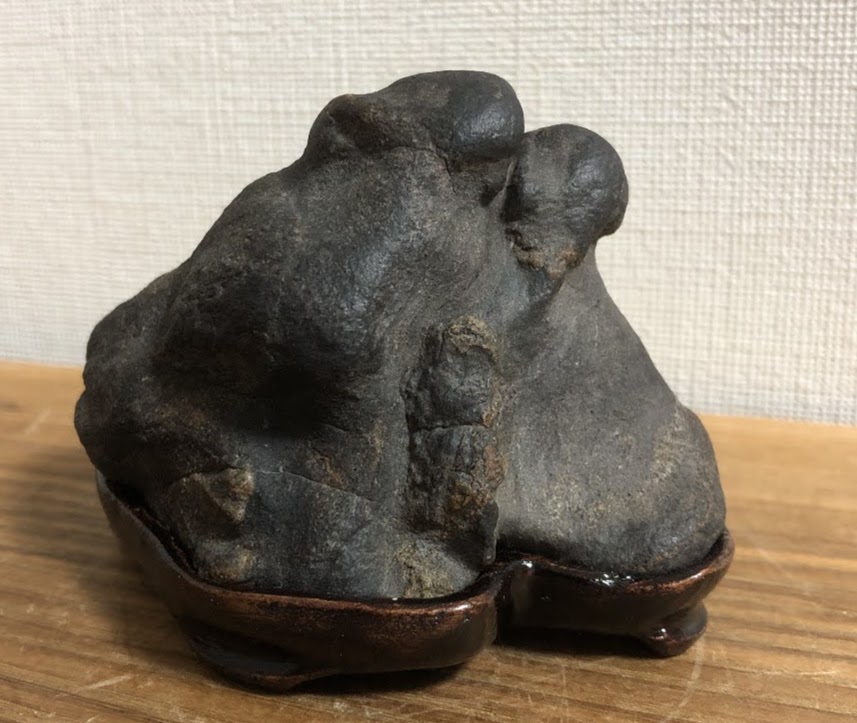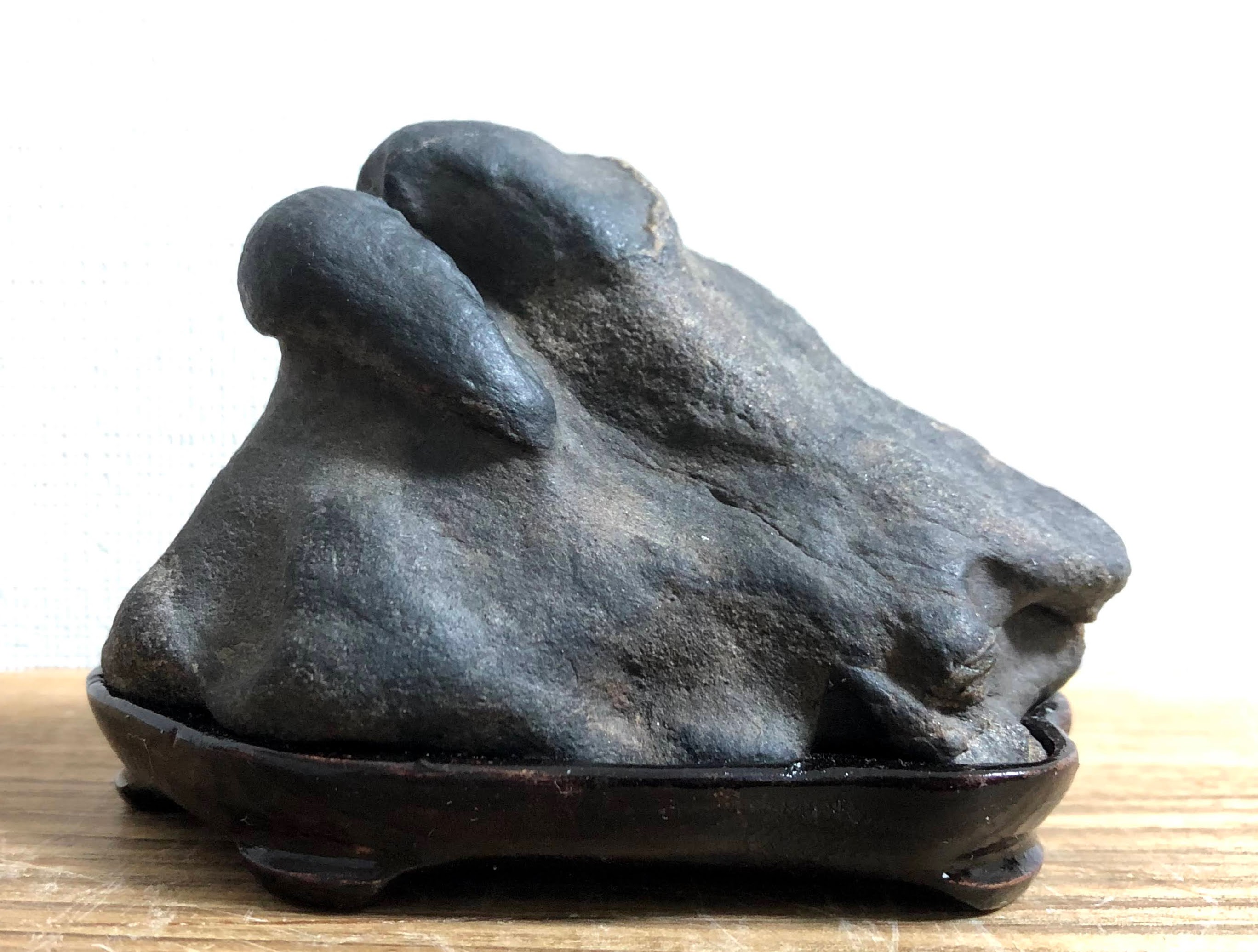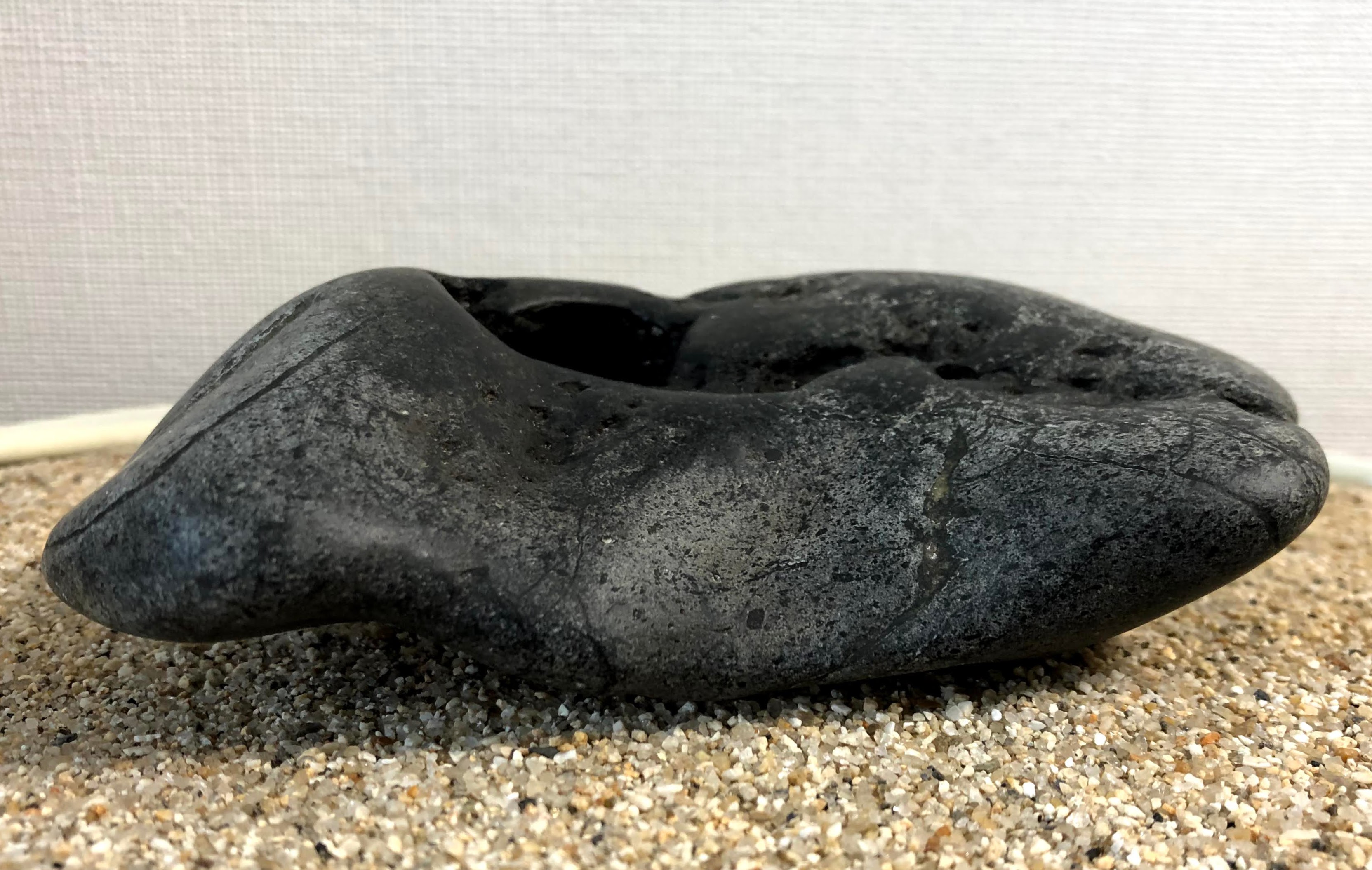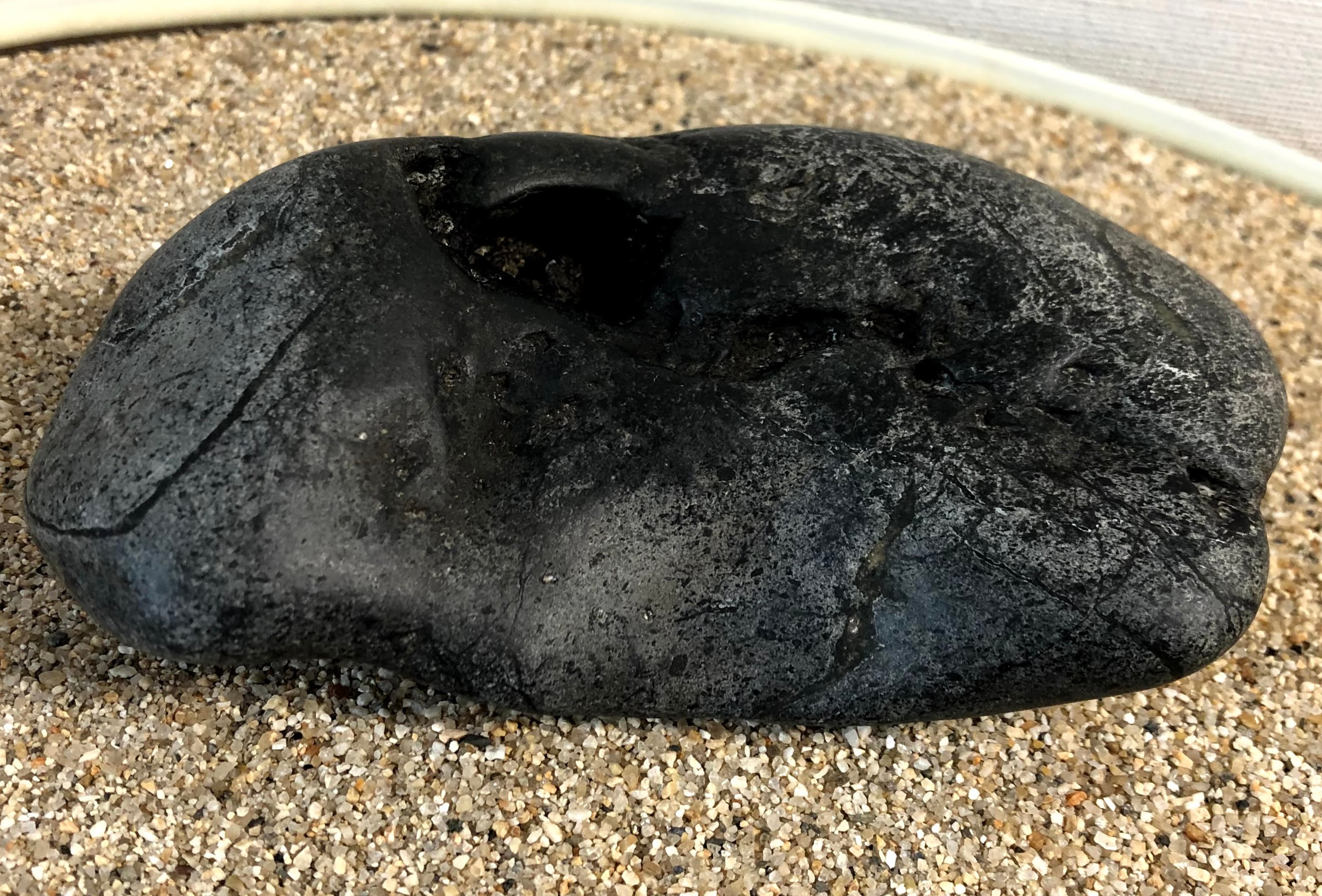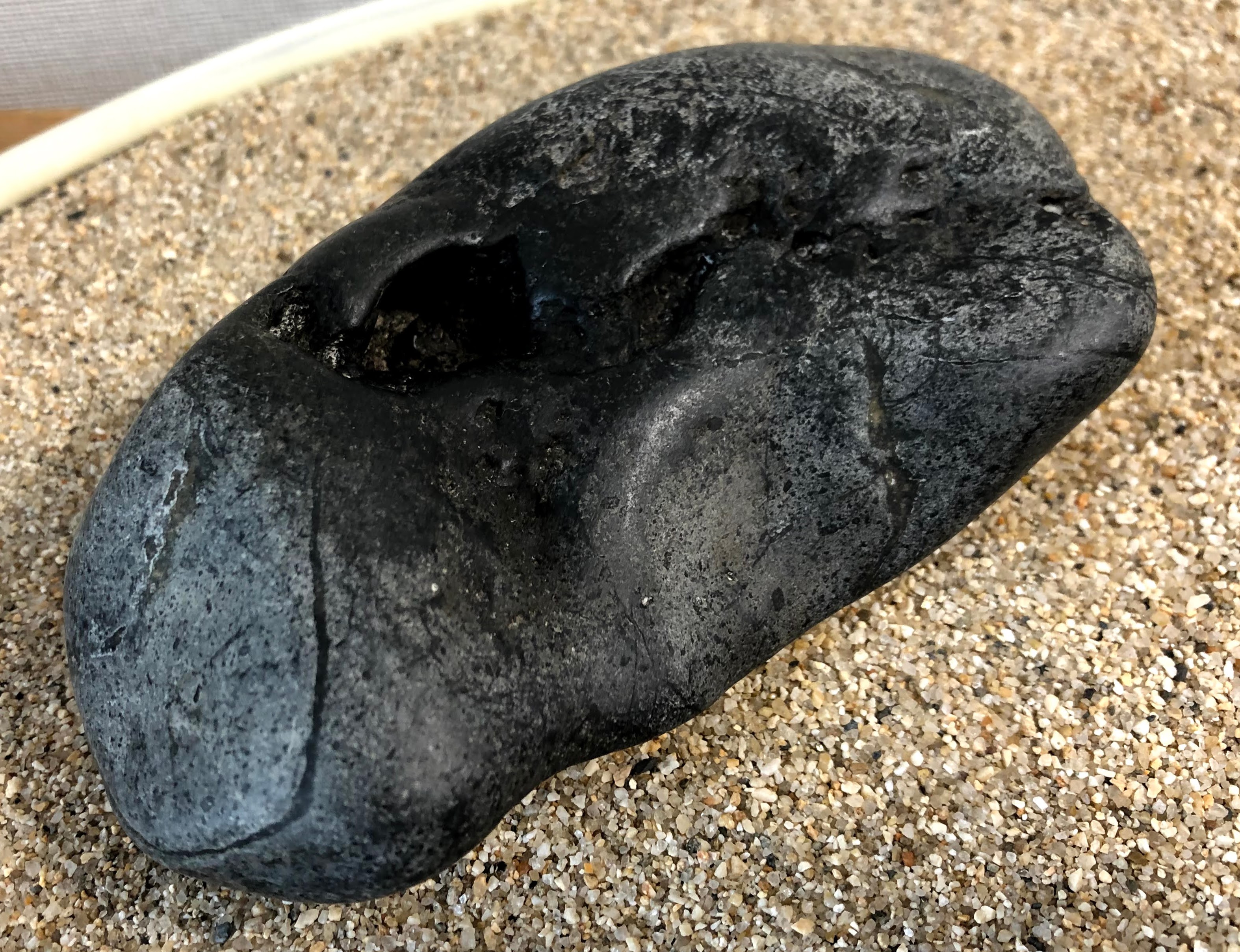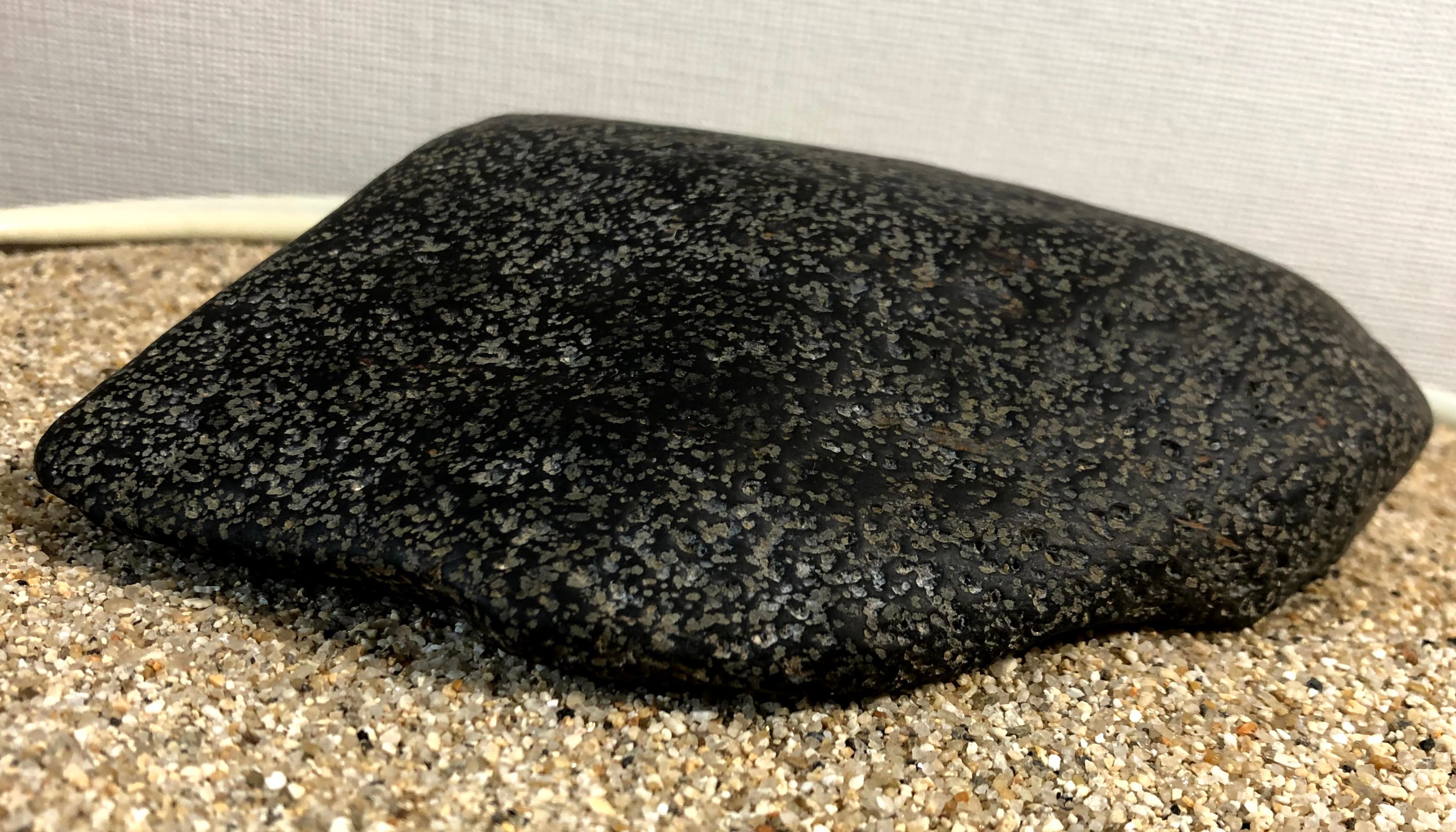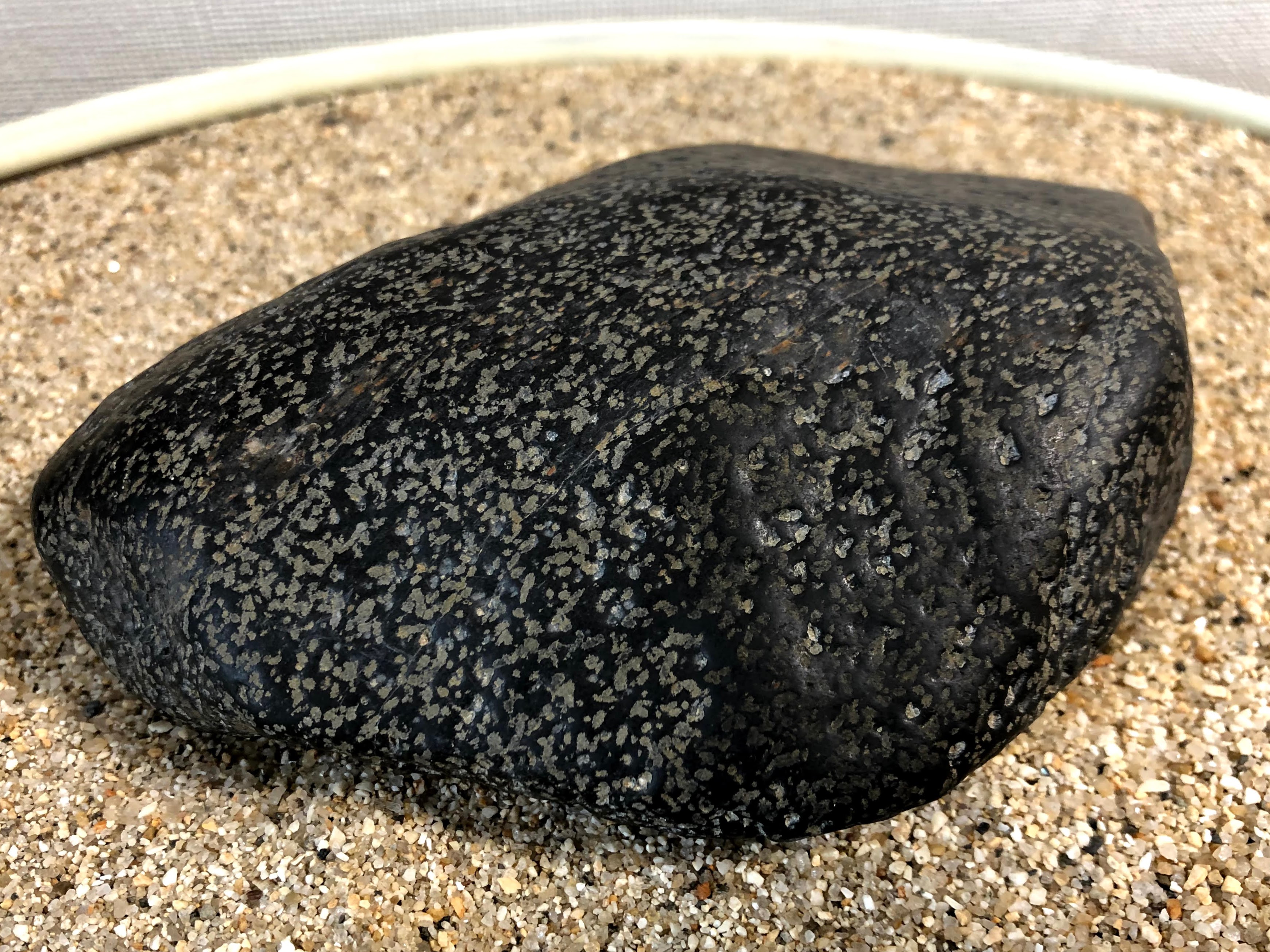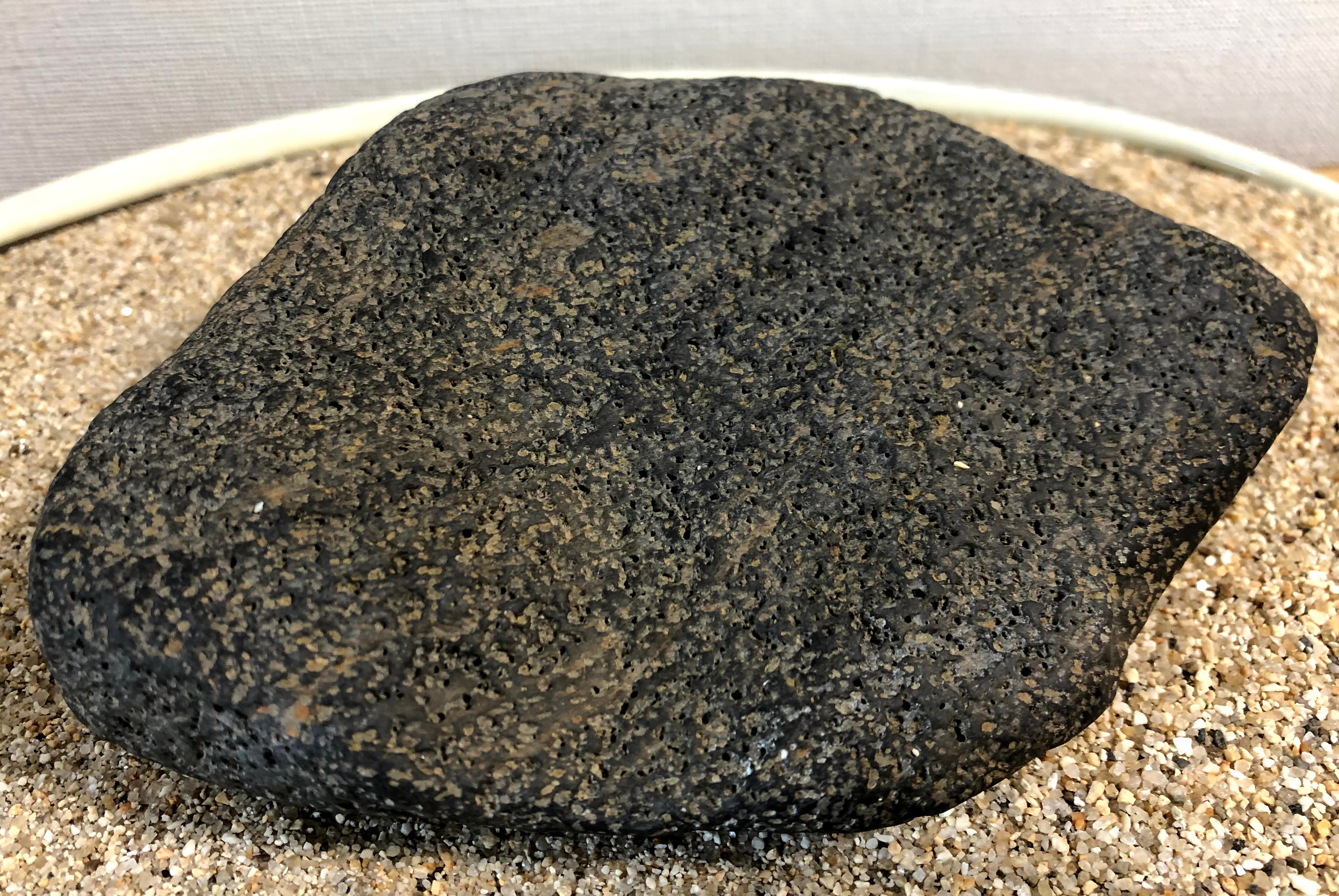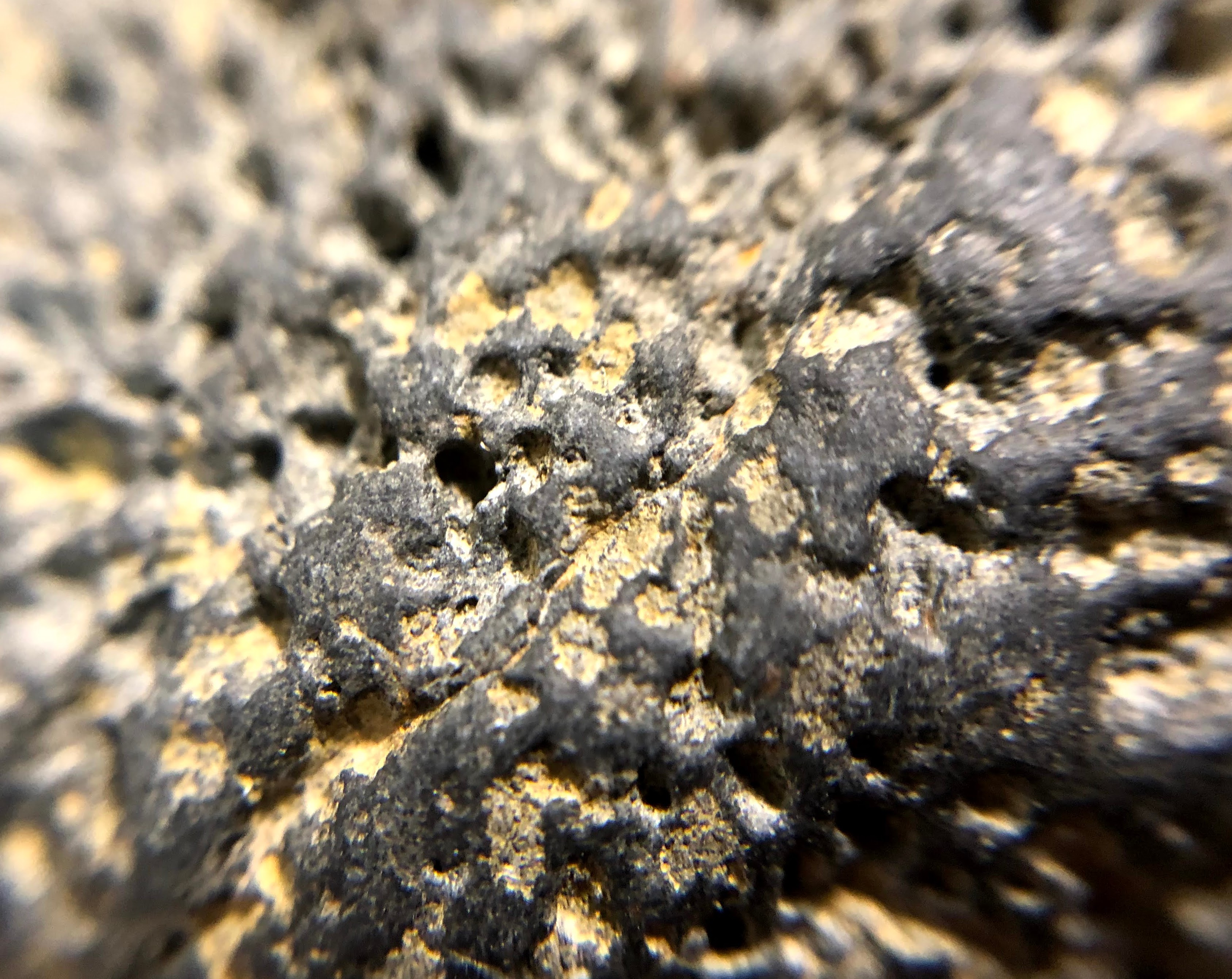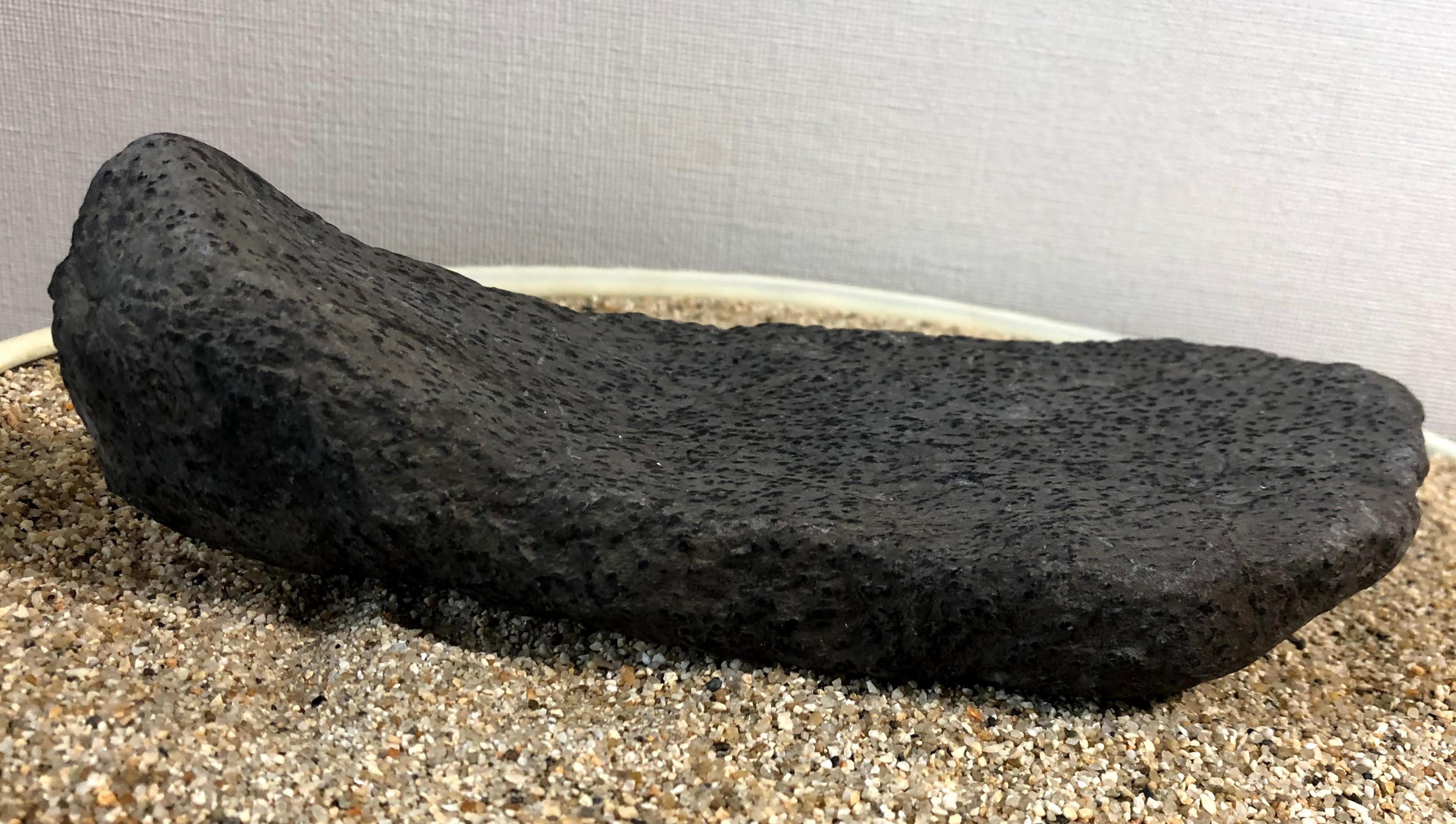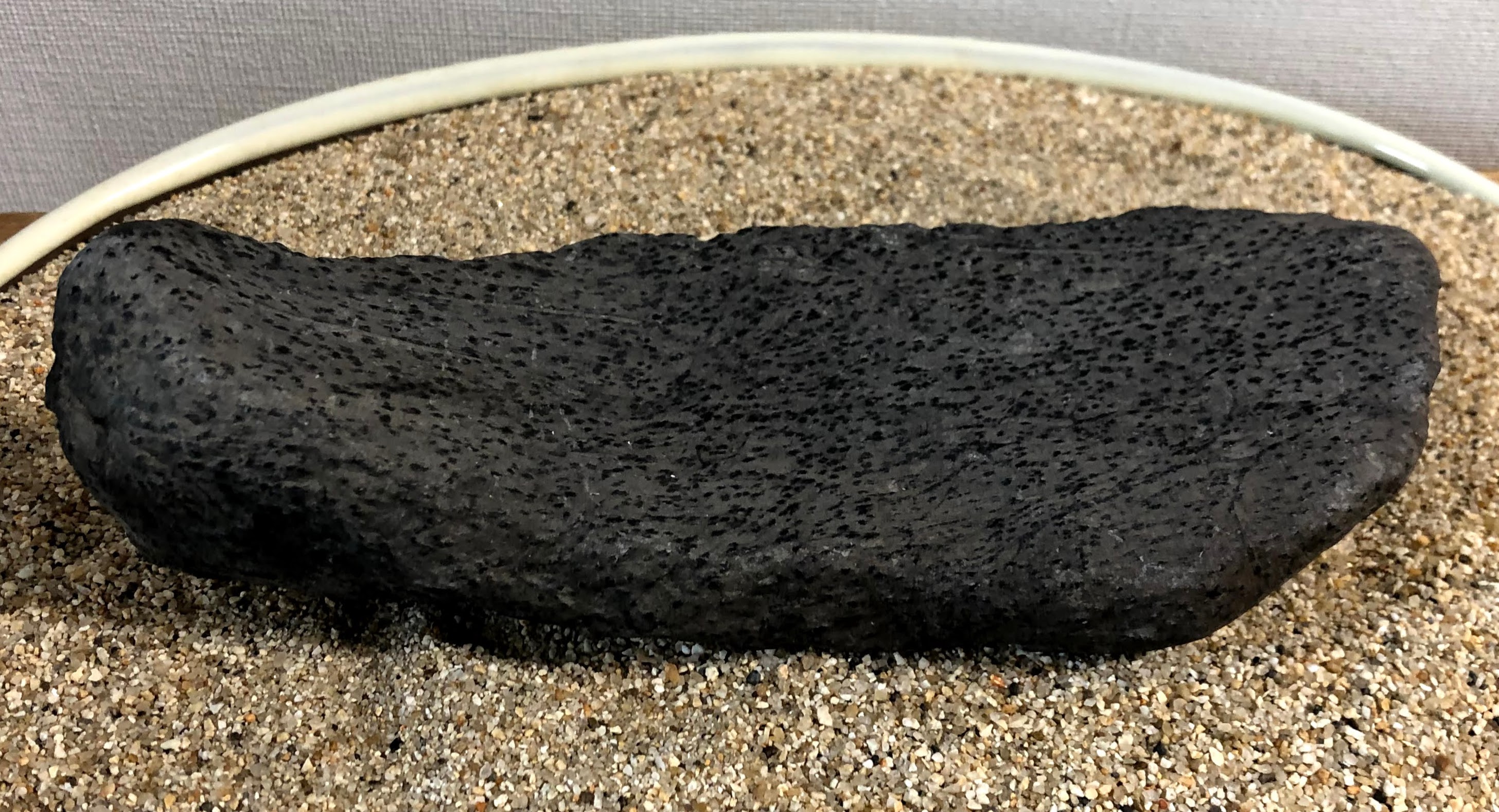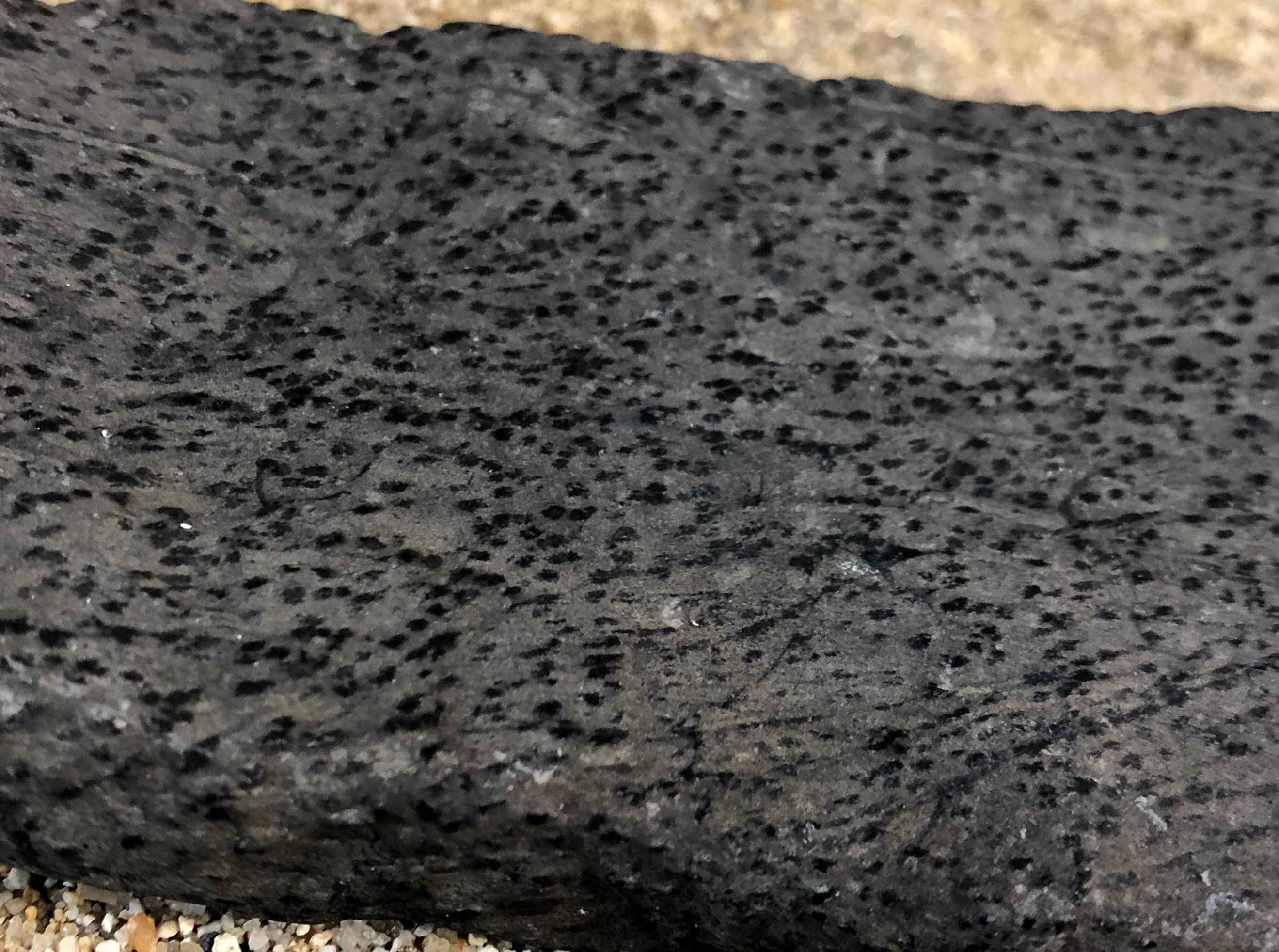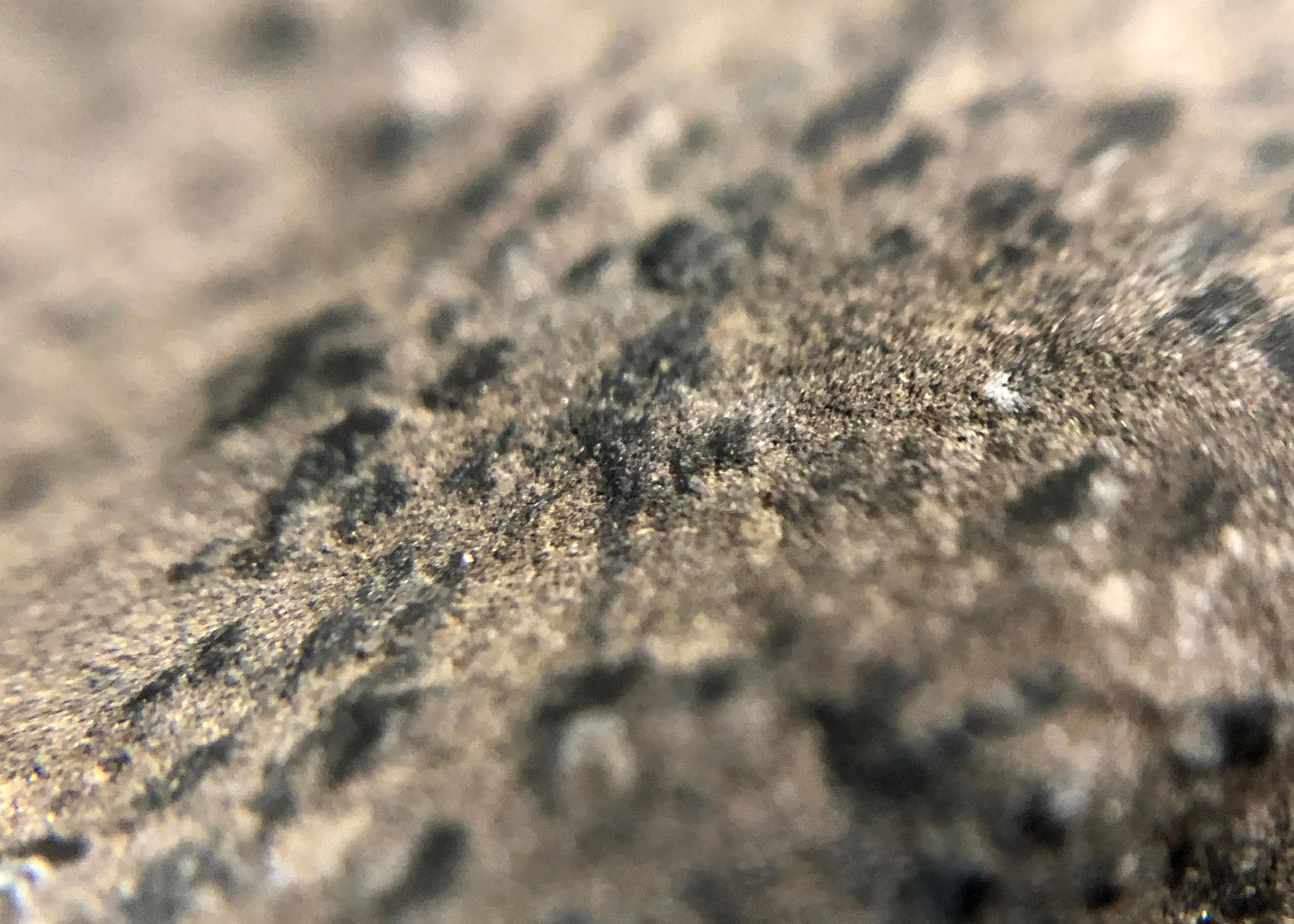Setagawa-ishi-I, 瀬田川石
Setagawa-ishi
Setagawa-ishi is regarded as one of big three Suiseki, ranks with Kamogawa-ishi and Sajigawa-ishi.
Though it is so, as regards the big three Suiseki, it is not based on concrete and statistical survey but it is kind of an understanding from various theories. Someone might say how about KamuiCotan-Seki or Ibigawa-ish.
Nevertheless, I consider Segagawa-ishi to be in big three Suiseki because of quality, variety, volume, and peculiarity.
From these characteristics, I believe that the best is quality, it is solid and hard.
If you have a change to touch Setagawa-ishi, I recommend you to flick it by nail. The sound is high-pitched as if flicking metal.
Setagawa-ishi is basically Hornfels which is contact metamorphic rocks that have been baked and hardened by the heat of intrusive igneous masses. However, sometimes, strange stones are found.
I think it may be because once-living thing from a past geological age. The hardness may be because Setagawa-ishi have been baked and hardened by the heat of intrusive igneous masses several times.
Setagawa-ishi is so hard and it is the reason why its surface is smooth but Jagure is not found easily.
As for trading volume, if you search it with keyword “Suiseki” online, Setagawa-ishi is easily hit.
it is not too much to say that Setagawa-ishi is king of Suiseki.
Setagawa-ishi - Kani Maguro
There are two types of Maguro-ishi having specific hollow patterns in Setagawa-ishi. One is Kani Maguro and the other is Sasa Maguro. Kani means crab and Sasa is bamboo grass in English. The specific hollow patterns are by Cordierite scattered through the fine matrix in Hornfels. Although the difference is from the shape of the hollow patterns, it is not clear for everyone.
As for Kani, there are two stories, one is because the hollow patterns looks like claws, the other is the track of crab. The other opinion is: if the shape of the hollow pattern is wide, it is Kani. If it is narrow, it is Sasa.
Or, if the shape of the hollow pattern is deep, it is Kani. If it is shallow, it is Sasa.
Either way, it is a feeling from the pattern.
In this site, no specific categorization.
This is Setagawa-ishi.
The hollow is deep and also each hollow is connected. It looks like the track of crab, so I call this stone Kani Maguro.
In the case of this stone, its oxidized silver color is more characteristical.
It is shiny like metal but not magnet reaction.
This is backside.
In the case of this stone, front side view is not Toyama and therefore, backside may be more characteristical. Especially for right side looks like a Japanese sacred straw festoon.
It looks like a rope used to cordon off consecrated areas or as a talisman against evil in Japan.
Usually, Hornfels seems to be uniform because it have been baked and hardened by the heat of intrusive igneous masses, however, there are some Setagawa-ishi that the reason of its shape is unkown.
This rope is one of them and I cannot understand the origin.
It may be because once-living thing, fossil.
This stone is quite old and the previous owner obtained this in stone community. Suiseki, by its persistence, should be passed down to subsequent generation.
I will keep this safe.
Setagawa-ishi - Maguro-ishi
This is Maguro-ishi, Setagawa-ishi. Due to its unique shape, it may be also once-living thing.
How is this unique shape made?
Bottom view. no shape changed and it is quite natural. It is glitter but mud, so, it seems to be pelitic hornfels
If you say this unique shape is because mollusks fossil, I have no doubt.
There are mysterious stones in Setagawa-ishi.
Setagawa-ishi - Maguro-ishi
This Setagawa-ishi has Tamari, a hole to hold water, in the middle.
In Setagawa-ishi, there are few Jagure because of its hard Hornfels. Generally, Jagure can be found in middle hard stones.
In the case of this stone, if you see carefully inside the hole, the inside is very intricately shaped, so, it looks like Jagure. But this kind of spot focusing view is not general. Besides, smooth surface around Tamari is highly visible from the whole shape.
Why was Tamari made? Maybe, in the process of becoming Hornfels, baked and hardened by the heat of intrusive igneous masses, there was some object.
This stone is also hard and if you flick it by nail, high-pitched sound as metal can be heard.
Setagawa-ishi - Nashiji
Although I categorized this stone Nashiji, topside is Nashiji but bottom side is actually Sudachi Maguro-ishi.
It is worn by a river and smooth surface on topside with black, glossy and hard.
Bottom side is not so worn and there are tiny holes. bottom side might be buried in the bottom of a rive.
This is zoom photo of the bottom side. There are white dots with shallow holes and deep holes without white dots. The white dots seems to be trace of cordierite removed.
Setagawa-ishi - Beiten
This is Setagawa-ishi, Beiten and the shape is Funagata-ishi, which means boat shape.
I feel like mealy to the touch but still hard and high-pitched sound as metal can be heard by flicking it by nail,
As for this Beiten, although rice dots are coming out, they seem to be not other mineral but hard portions of Hornfels.
They had been baked and hardened but other portions were not under metamorphism so much. Therefore mealy and softer than rice dots.


